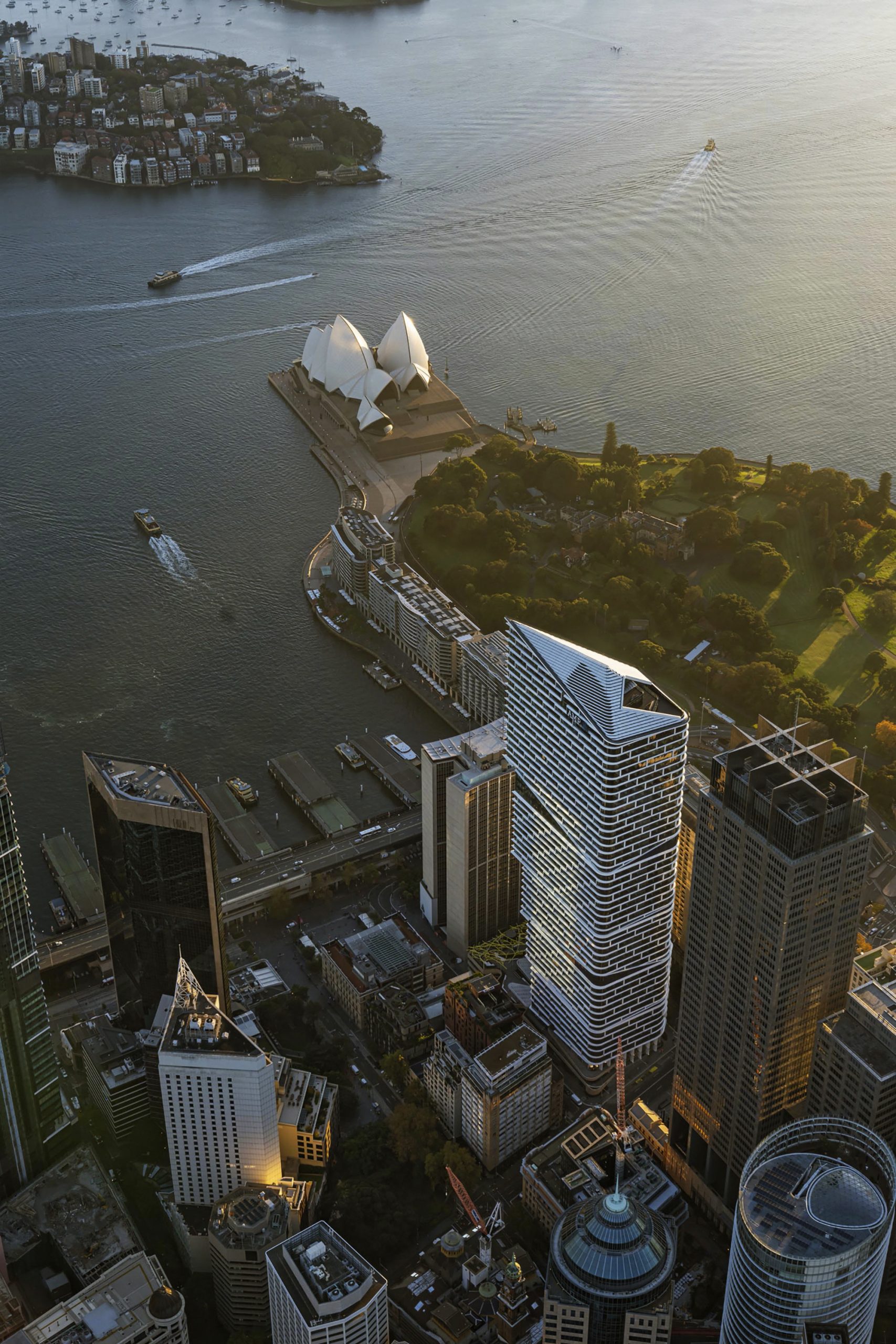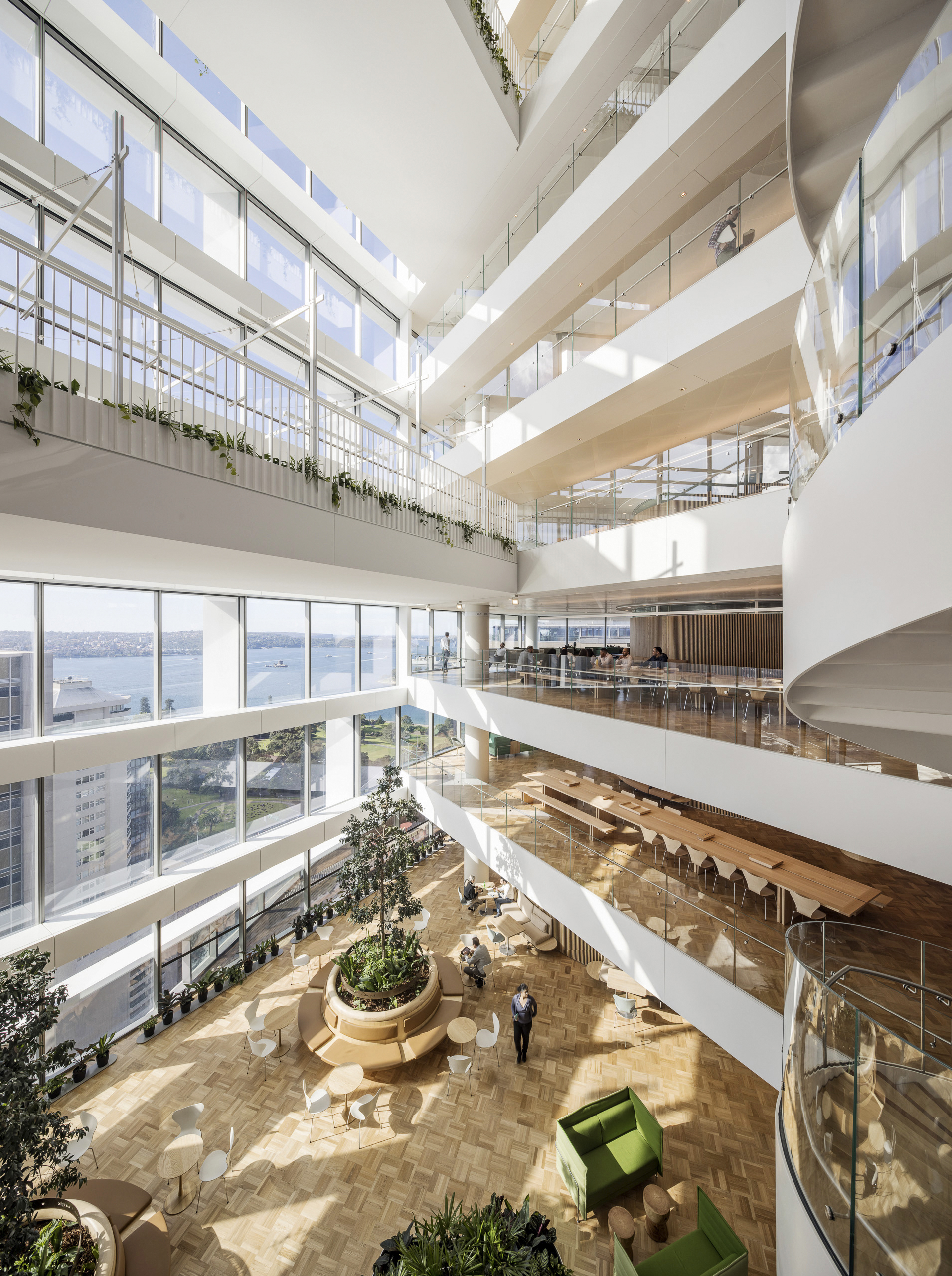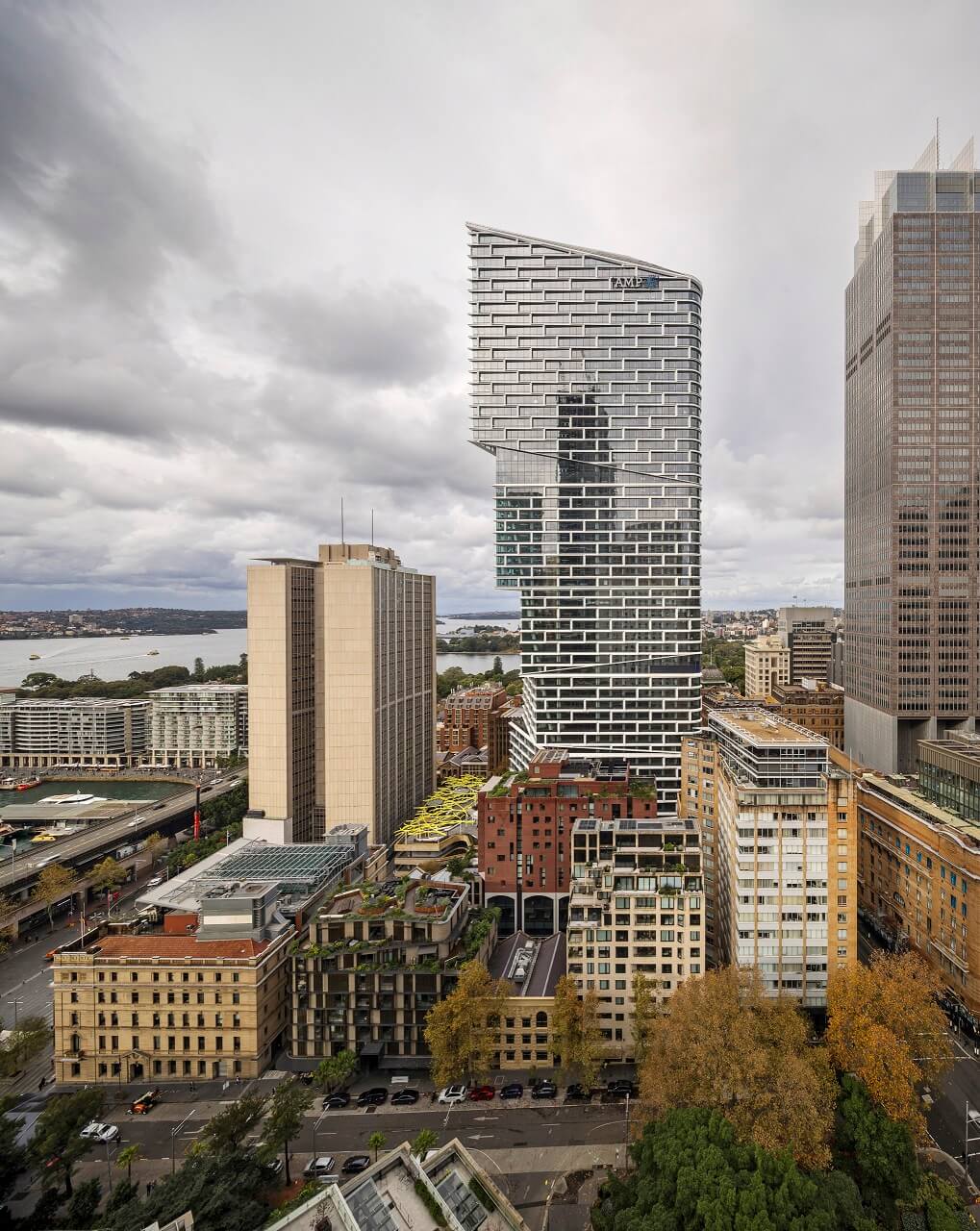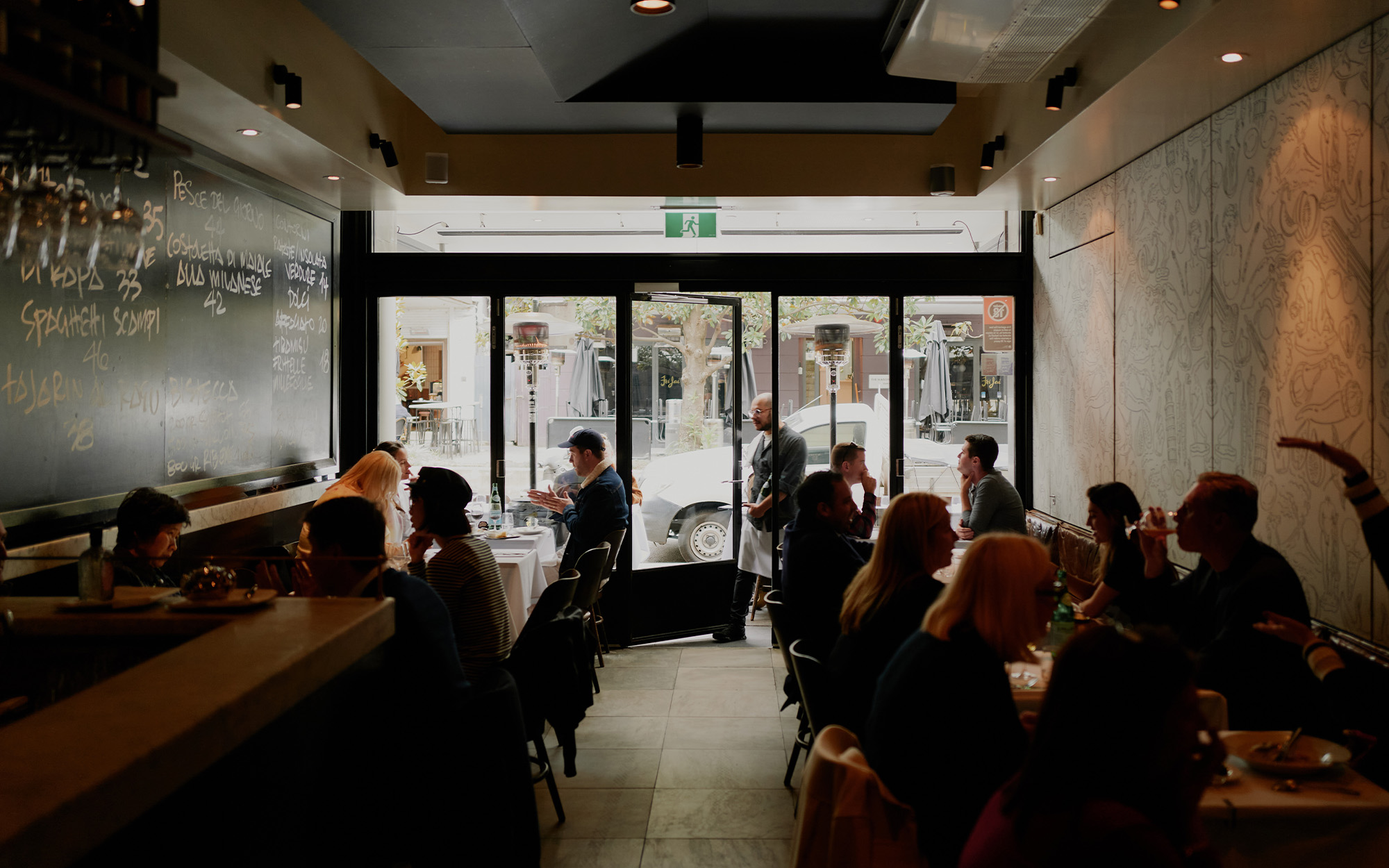How Sydney’s AMP Quay Quarter Tower went above and beyond – and onto the world stage
The landmark building has been awarded an international architecture prize for its ‘radical sustainability’
T o understand the level of detail involved in the design and construction of the 50-storey Quay Quarter Tower, you need to know about the cab ride Dan Cruddace, project director from BVN, and project architect Fred Holt for 3XN took early one morning across Sydney Harbour Bridge.
“It was 2016 and we were trying to address solar radiance from the building,” Dan says. “We realised that for two hours from 6am from April to September, the reflectivity in one spot of the tower could potentially blind some of the drivers on the bridge.”
After their run across the bridge, they modified the design of a select number of windows on the upper block of what was best known to most Sydneysiders as the AMP building, now Quay Quarter Tower.

“We developed a system of tilting the glass on the upper block by 2.3 degrees which resolved that issue,” Cruddace says.
It’s a testament to the attention to even the smallest details of this complex build that appears as a series of five stacked ‘boxes’, each slightly pivoted to manage light, connectivity between floors and the challenging topography of the Circular Quay site.
Award-winning local architectural firm BVN were chosen to partner with Danish firm 3XN, who won the international design competition for Quay Quarter Tower, partnering with construction giant Multiplex, to transform the AMP building, constructed in 1976, while retaining as much of the original building as they could.
Now the building has been recognised for its approach to sustainable building practices, with the announcement of the International High Rise Award in Frankfurt overnight. Rather than demolish the building completely, as part of the construction process, 7500 tonnes in carbon dioxide emissions by saving the southern side and core of the building.
Although AMP is the ‘anchor tenant’ for the building, several businesses, including Deloitte, have signed on to lease space, with the building expected to be fully occupied by mid 2023.
Cruddace says the team were very aware of the building’s place in Sydney’s story, in every sense.
“It’s at the front door of Sydney and Australia in terms of world precincts and connectivity to the harbour – it had that kind of gravitas,” says Cruddace. “It’s a once-in-a-generation project.”

Positioned in front of the historic Museum of Sydney, with the newly opened Quay Quarter Lanes to its left, visitors and office workers within are always aware of their neighbourhood, thanks to a skilful manipulation of levels and glazing so carefully crafted to control the worst of the summer sun from every angle that no blinds are required. Instead, occupants of each floor can appreciate views of nearby buildings – historic and contemporary – as well as through lines to the harbour and the iconic bridge.
“It’s an amazing site but the original building had so many problems with it in terms of layers of poor planning and permeability and there were real issues with the topography,” Cruddace says.
The rotation of the ‘boxes’ also allow for outdoor terraces populated with landscape design by ASPECT so that, even on the 30th floor, bees can be seen hovering over the flowering plants on the terrace.
If there is a recurring theme in this project, it’s connectivity. Every aspect of this building, from the market hall designed by UK designer Tom Dixon at street level, to the natural site lines to surrounding buildings and the harbour, to the stunningly sculptural spiral staircase that links several office floors, has been considered in terms of its relation to the other elements.
At the same time, spaces allow for intimate gatherings, private meetings or even solitude. It’s clear that at the heart of this project is the people who use it, whether they’re staff familiar with the layout or casual visitors to the retail spaces at street level.
Holt says it has raised the bar for what high rise buildings can and should be.
“The expectation previously for high rises was that they were just for providing efficiently stacked workspaces,” he says. “And they still have to be there. But users are expecting the experience to be engaging and to have spaces for collaboration and all those things that make us feel human.”
The team of BVN and 3XN have also won the design competition for Sydney Fish Market, an equally complex site due for completion in 2023.
For more stories like this, order your copy of Kanebridge Quarterly magazine here
This stylish family home combines a classic palette and finishes with a flexible floorplan
Just 55 minutes from Sydney, make this your creative getaway located in the majestic Hawkesbury region.
As Paris makes its final preparations for the Olympic games, its residents are busy with their own—packing their suitcases, confirming their reservations, and getting out of town.
Worried about the hordes of crowds and overall chaos the Olympics could bring, Parisians are fleeing the city in droves and inundating resort cities around the country. Hotels and holiday rentals in some of France’s most popular vacation destinations—from the French Riviera in the south to the beaches of Normandy in the north—say they are expecting massive crowds this year in advance of the Olympics. The games will run from July 26-Aug. 1.
“It’s already a major holiday season for us, and beyond that, we have the Olympics,” says Stéphane Personeni, general manager of the Lily of the Valley hotel in Saint Tropez. “People began booking early this year.”
Personeni’s hotel typically has no issues filling its rooms each summer—by May of each year, the luxury hotel typically finds itself completely booked out for the months of July and August. But this year, the 53-room hotel began filling up for summer reservations in February.
“We told our regular guests that everything—hotels, apartments, villas—are going to be hard to find this summer,” Personeni says. His neighbours around Saint Tropez say they’re similarly booked up.
As of March, the online marketplace Gens de Confiance (“Trusted People”), saw a 50% increase in reservations from Parisians seeking vacation rentals outside the capital during the Olympics.
Already, August is a popular vacation time for the French. With a minimum of five weeks of vacation mandated by law, many decide to take the entire month off, renting out villas in beachside destinations for longer periods.
But beyond the typical August travel, the Olympics are having a real impact, says Bertille Marchal, a spokesperson for Gens de Confiance.
“We’ve seen nearly three times more reservations for the dates of the Olympics than the following two weeks,” Marchal says. “The increase is definitely linked to the Olympic Games.”

Getty Images
According to the site, the most sought-out vacation destinations are Morbihan and Loire-Atlantique, a seaside region in the northwest; le Var, a coastal area within the southeast of France along the Côte d’Azur; and the island of Corsica in the Mediterranean.
Meanwhile, the Olympics haven’t necessarily been a boon to foreign tourism in the country. Many tourists who might have otherwise come to France are avoiding it this year in favour of other European capitals. In Paris, demand for stays at high-end hotels has collapsed, with bookings down 50% in July compared to last year, according to UMIH Prestige, which represents hotels charging at least €800 ($865) a night for rooms.
Earlier this year, high-end restaurants and concierges said the Olympics might even be an opportunity to score a hard-get-seat at the city’s fine dining.
In the Occitanie region in southwest France, the overall number of reservations this summer hasn’t changed much from last year, says Vincent Gare, president of the regional tourism committee there.
“But looking further at the numbers, we do see an increase in the clientele coming from the Paris region,” Gare told Le Figaro, noting that the increase in reservations has fallen directly on the dates of the Olympic games.
Michel Barré, a retiree living in Paris’s Le Marais neighbourhood, is one of those opting for the beach rather than the opening ceremony. In January, he booked a stay in Normandy for two weeks.
“Even though it’s a major European capital, Paris is still a small city—it’s a massive effort to host all of these events,” Barré says. “The Olympics are going to be a mess.”
More than anything, he just wants some calm after an event-filled summer in Paris, which just before the Olympics experienced the drama of a snap election called by Macron.
“It’s been a hectic summer here,” he says.

AFP via Getty Images
Parisians—Barré included—feel that the city, by over-catering to its tourists, is driving out many residents.
Parts of the Seine—usually one of the most popular summertime hangout spots —have been closed off for weeks as the city installs bleachers and Olympics signage. In certain neighbourhoods, residents will need to scan a QR code with police to access their own apartments. And from the Olympics to Sept. 8, Paris is nearly doubling the price of transit tickets from €2.15 to €4 per ride.
The city’s clear willingness to capitalise on its tourists has motivated some residents to do the same. In March, the number of active Airbnb listings in Paris reached an all-time high as hosts rushed to list their apartments. Listings grew 40% from the same time last year, according to the company.
With their regular clients taking off, Parisian restaurants and merchants are complaining that business is down.
“Are there any Parisians left in Paris?” Alaine Fontaine, president of the restaurant industry association, told the radio station Franceinfo on Sunday. “For the last three weeks, there haven’t been any here.”
Still, for all the talk of those leaving, there are plenty who have decided to stick around.
Jay Swanson, an American expat and YouTuber, can’t imagine leaving during the Olympics—he secured his tickets to see ping pong and volleyball last year. He’s also less concerned about the crowds and road closures than others, having just put together a series of videos explaining how to navigate Paris during the games.
“It’s been 100 years since the Games came to Paris; when else will we get a chance to host the world like this?” Swanson says. “So many Parisians are leaving and tourism is down, so not only will it be quiet but the only people left will be here for a party.”
This stylish family home combines a classic palette and finishes with a flexible floorplan
Just 55 minutes from Sydney, make this your creative getaway located in the majestic Hawkesbury region.


















